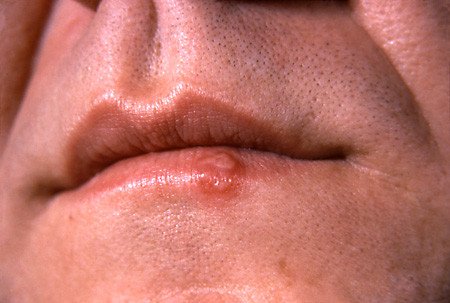 Take a look around you. Go ahead. Look left. Look right. Look up. Look down. Now take a deep breath and exhale. Feel better? You shouldn’t because you just huffed a bunch of polluted air. Also, because you have herpes, probably. As does everyone you just looked at, probably.
Take a look around you. Go ahead. Look left. Look right. Look up. Look down. Now take a deep breath and exhale. Feel better? You shouldn’t because you just huffed a bunch of polluted air. Also, because you have herpes, probably. As does everyone you just looked at, probably.
According to the World Health Organization (WHO) 67 percent of the population has herpes simplex virus type 1 (HSV-1). That’s two out of three people under the age of 50 years old.
So, what does this mean? Should you make a hydrogen peroxide bath? Raid a hospital for a new Hazmat suit 24/7? Yeah, sure. But not because of the astronomical herpes numbers. Guys hear the name “herpes” and automatically think it has to do with their dicks; typical, fellas. Thing is, type 1 herpes is oral herpes and it translates to cold sores. It’s passed by mouth-to-mouth contact and is more of a nuisance than anything else. (Although, the researchers want us all to know that getting type 1 herpes on your junk can totally happen.)
The one you’re not looking to contract is herpes type 2 (HSV-2), which according to The Washington Post affects more than 417 million people. From The Post:
One study of New York City (from 2008) suggests that urban rates may be much higher: That survey found that more than 25 percent of the people they tested had HSV-2, with especially high rates for women (36 percent) and non-hispanic black women (80 percent).
Actually, after reading that, we’re like to rethink our line about the Hazmat suit. Maybe you should get one. And you should totally wear a Hazmat suit during sex (aka a condom). Still, even if you do end up contracting HSV-2, you can tame it with a pill. It’d be nice if you could rid yourself of it, but there are 417 million people out there keeping it dormant, so you’ll just have to become one of them.
Read This Next: Binge Drinking and Hangovers Cost Companies Billions Per Year [Study]

![Binge Drinking and Hangovers Cost Companies Billions Per Year [Study]](https://www.modernman.com/wp-content/uploads/2015/11/CMFcQKTVEAALWEs.jpg)


